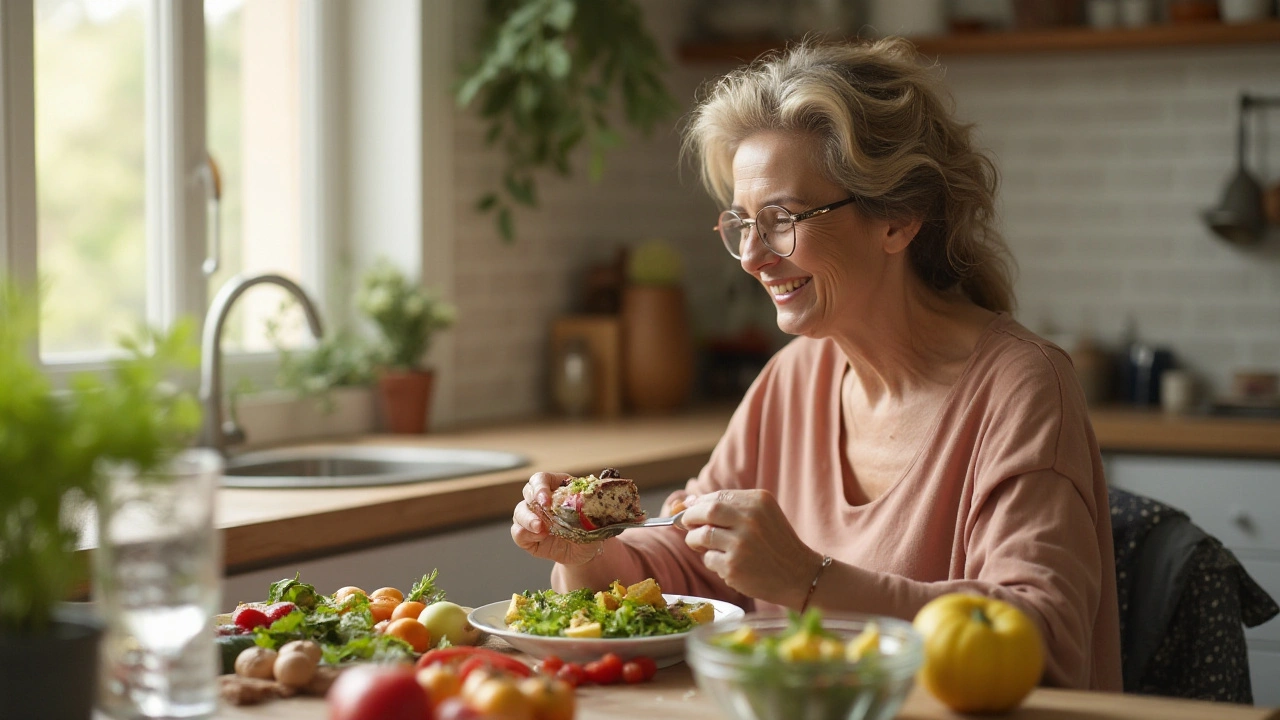Mindful Eating: Eat with More Focus, Less Stress
Rushing through a meal changes how your body digests food and how you feel afterward. Slow, focused eating calms your nervous system, helps digestion, and often stops overeating. If you want practical changes you can use today, try a few small habits that add up fast.
Easy steps to start right now
Pause before you eat. Take one full breath and notice hunger level on a 1–10 scale. If you’re below 4, wait 10–15 minutes; a snack or water might be enough. That one pause prevents emotional or automatic eating.
Remove distractions. Turn off screens or step away from your desk. When your brain splits attention, it misses fullness signals and you tend to eat more. Eating without distraction also makes meals more satisfying.
Chew and pace. Aim for fewer than 20 chews per bite at first—no strict rule, just slower than usual. Put your fork down between bites. This gives your stomach time to tell your brain you’re getting full.
Notice flavors and textures. Name three things you taste or feel in each bite—salt, crunch, warmth. This small practice trains attention and makes simple foods feel more rewarding.
Stop at roughly 80% full. Most people eat past comfortable fullness because food tastes good or because they’re distracted. Give your body a minute after your last bite; fullness often arrives a minute or two later.
Plan simple, balanced plates. Combine protein, fiber, healthy fats, and veggies. That mix steadies blood sugar and keeps hunger in check between meals, which makes mindful eating easier.
Mindful feeding for your dog
Mindful eating isn’t just for people. Dogs benefit from slower feeding and focused mealtimes. Use a slow-feeder bowl or scatter kibble in a puzzle feeder to stretch a 2-minute meal into 10 minutes of chewing and sniffing. That helps digestion and reduces gulping, bloat risk, and boredom.
Make mealtime calm. Feed in a quiet spot, remove other pets for a few minutes if needed, and watch your dog’s pace. Hand-feeding high-value bites during training builds focus and a positive meal routine. For anxious dogs, short pre-meal walks settle the nervous system so they eat more calmly.
Small habits stick. Start with one change—no screens at breakfast, or add a slow-feeder for your dog—and repeat it until it feels normal. Use a single cue like a bell or a breath to mark the start of mindful eating.
Want real examples? Try mindful breakfasts like a bowl of oats with nuts and fruit eaten at a table, or a simple plate with lean protein, greens, and a deliberate five-minute pause before the first bite. Pairing your new habit with dog care—like filling a puzzle feeder while you sip tea—turns two routines into one win.
Explore related posts on nutrition, stress relief, and mindful practices for more practical tips and easy routines you can use every day.

Effective Strategies for Enhancing Gastro Health Through Mindful Eating
Mindful eating can greatly improve your digestive health. This article explores practical tips and interesting facts on how to eat mindfully, ensuring better digestion and overall well-being. Learn how simple changes in your eating habits can make a big difference in your gastro health.



